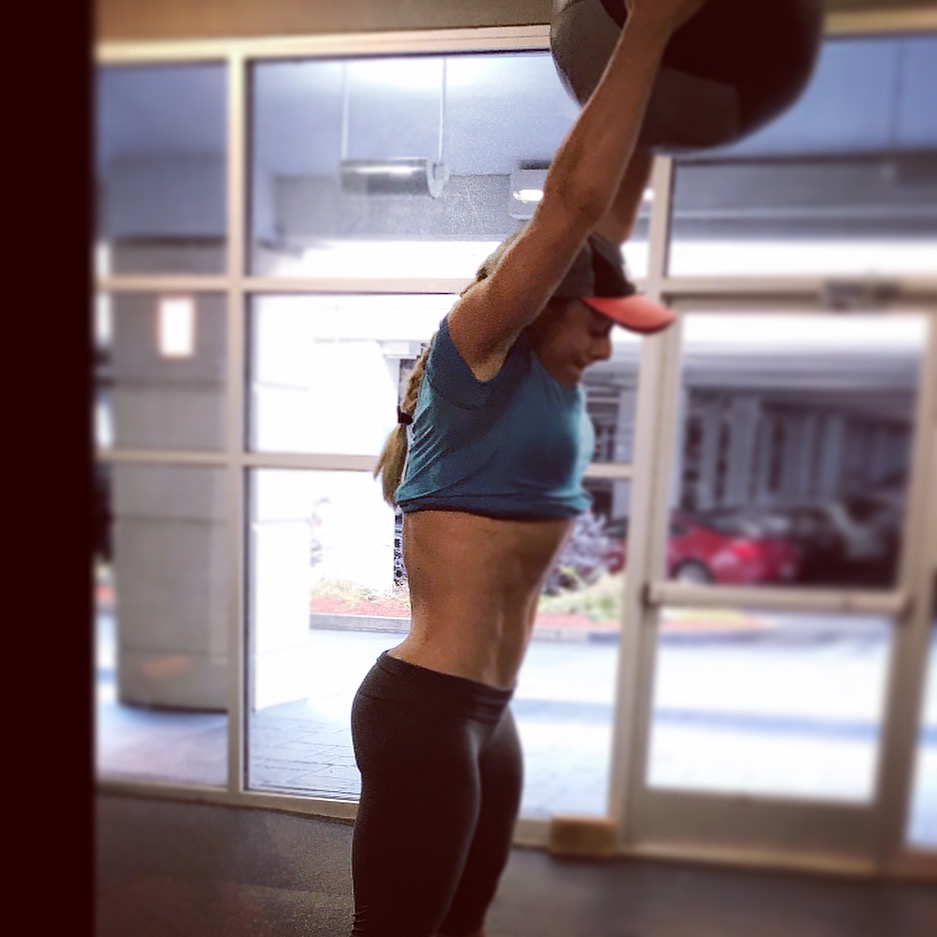When it comes to the diet and fitness industry, everyone is obsessed with “more, more more” and “more is always better.” Especially when we’re talking about exercise. Think about it, how many times have you heard the phrase: “EXERCISE MORE! EAT LESS! AND YOU WILL DROP FAT!”
I can attest I think we’ve all heard that sentence at some point during our lifetime.
I agree with it to some extent, BUT here’s the problem I see when you try to pigeon-hole yourself into that way of thinking for 100% of your fat loss goals.
NOT EVERYONE IS CREATED EQUAL.
Just because your friend can do 3 HIIT workouts in a row and feel like a millon bucks while you’re over here on the struggle bus after one workout doesn’t make you any worse or better.
So much of how your body responds to exercise has more to do with how you respond to the stressor itself than how hard you can kill it at the gym.
Because EXERCISE IS A STRESSOR.
Is exercise a good thing? For sure, and if anything, a nice long walk in nature leaves us feeling replenished and rejuvenated. However, on the flip side, too many squats, lunges, deadlifts or sprints can often leave us in the hole with little to no return with a side of injuries, burn-outs, depression, anxiety, and illness when we’re in the state of overtraining.
But, it’s not really the overtraining that’s the real issue, our bodies can handle a ton, it has more to do with under-recovery than anything else.
I get it, the workout drug is a high indeed, especially when we get that dopamine fix everytime we hit the gym and crush a workout session or go for a long, hard run. It’s addicting and understandably so.
I see it all the time, clients throwing every hard earned dollar into their new weight loss routine and dive in head first, ready to commit 100% and tackle their weight loss for good. While this is fine, this is typically short-lived and unsustainable.
THE WORKOUTS WORK UNTIL THEY DON’T.
Here’s what I mean….
You might start a new workout plan or maybe you switch to a sport that’s completely different than what you’re accustomed to and you see instantaeous results and it feels pretty rad.
Leaner? Check.
Fitter? Check.
Weight loss? Check.
So you keep doing it. And more of it to get better results right?
Then, before you know it you wake up and your whole body aches in pain or that cold you got a few months ago seems to be resurfacing over and over again.
Maybe a week or two later your desire to workout has gone down the tubes and hitting the gym starts to feel like a chore than the peak in your day you once felt.
The problem isn’t the intensity or the exercise itself.
The problem is how you balance your recovery with the exercise stressor.
REJUVENATING VS. ANNIHILATING.
However you choose to see it, exercise is a stressor. A positive stressor, but a stressor nonetheless.
When you throw in intensity, long training sessions and little rest ON TOP of your everyday stressors this is where you can get yourself into trouble.
Example: Let’s say Sally has a demanding full-time job, 2 kids, and a host of responsibilities that come along with being a mom and wife. Last month, she decided to take on training for a full marathon. In the beginning, the running habit made her feel amazing and she felt it was a great way to relieve her stress. However, she started getting backlash from her boss with her work performance, one of her kids got very sick and she saw the once positive effects of her running start to backfire.
Instead of taking a few steps back and finding alternative ways to relieve stress, she kept pushing herself with her long runs and intensity thinking that way of training would make her feel better.
“I just need to push harder.” Sally thought. “I’m not working hard enough.”
Before she knew it, she felt run down, sick, depleted and overly stressed.
Hence the reason why it’s imperative to incorporate rest and recovery in your workouts to perform at your best.
Activities such as massage, self-compassion, walks in nature, yoga, spending time outdoors and laughing with friends and family is a necessity when we’re dealing with stressors (including exercise.)
At the end of the day, we’re all individualized and our allostatic load (ie: how much stress you’re currently under) all plays a significant role in how your body responds to excessive stressors.
Which is exactly why a peer of yours can crush workouts like there’s no tomorrow while you’re over here trying to get a run in and not get sick afterward.
Again, look at your current stressors, what’s currently going on in your life?
If you’re taking on a lot the last thing you want to do is overexercise or knock out an intense training session. These are the times you need to take a step back and implement more low-key training days to allow your system to bounce back and recoup.
I see this a lot with my Type-A clients who feel the need to constantly push and if they miss a day of a hard workout they feel like a failure. However, they can’t figure out why they feel so anxious all the time or why their body isn’t recovering like it wants to.
Our bodies are also cyclical, sometimes we have it and sometimes we don’t, it’s just the nature of the beast and it’s 100% normal so if you can’t normalize it yourself, I’m normalizing it for you. 🙂
It comes down to this simple equation:
THE RIGHT TYPE OF EXERCISE + AT THE RIGHT INTENSITY + AT THE RIGHT TIME = SUCCESS.
WE TRAIN, GROW, LEARN AND GET STRONGER.
TOO MUCH EXERCISE + TOO MUCH INTENSITY + LITTLE RECOVERY TIME = OVERLOAD
WE SHUT DOWN, GET SICK, INJURED AND BREAK DOWN.
There are two systems at play here:
Sympathetic Nervous System: (Fight or Flight) Think of this as always trying to be ON. Run from here to there, nonstop motion, revving at full speed and constantly staying in overdrive mode.
Parasympathetic Nervous System: (Rest and Digest) Think of this as your calming mechanism, you’re reading, getting a massage, having downtime and allowing your food to digest.
You need a combo of both. NOT one or the other.
By living in the sympathetic state, overtraining and keeping the intensity at a full-time high without prioritizing recovery means your body is in a constant state of stress that never subsides. If your anxiety is constantly elevated or you feel on edge, this is a prime example of under-recovery.
If you were to take a look “behind the scenes” you’ll most likely suffer from GI issues, hormone imbalances, chronic inflammation, mild depression or lack of feel-good neurotransmitters and excessive cortisol.
Therefore, you might experience side effects such as:
*anxiety
*depression
*restlessness
*insomnia
*blood sugar instability
*food cravings
*racing thoughts
*hormone imbalances
But, guess what? If you don’t take the time or resources to implement rest and recovery, your body will do it for you. It’ll fight back with chronic injuries, sickness, anxiety, lack of drive or motivation and exhaustion. Plus, the more you keep “pressing the gas pedal” the more you’ll need to take time off to recover.
After working in the industry for years and battling my own demons with excessive exercise and eating disorders, there’s one commonality I see over and over again with individuals who suffer similar mindsets.
THE DRIVE FOR MORE.
LEANER. FITTER. BETTER. FASTER. QUICKER. SKINNER. STRONGER.
In all honesty, many will solely base their self-confidence and esteem based on how their body looks and it’s much more common than one might realize. Many depend on extreme exercise to feel good about themselves. It’s all they know and if you were to take that away their identity would be demolished. Think about the competitive athletes who get sidelined and end up abusing drugs due to their source of identity being taken away from them.
Listen, I get it, those extreme, intense workouts make us feel good. At least temporarily. It’s a drug, a high and a true release that becomes highly addictive and obsessive.
It’s also a false sense of control.
The more we work out the more we can have control over how our body looks and often the compliments come flooding in which propels us to continue the behavior even further.
Honestly, it’s taken years and tons of mishaps to finally get a grasp of the need for more and why so many of us use exercise and food as a means for control and self-confidence. This way of thinking and doing isn’t something that just magically goes away.
Here’s the thing though: SOMETIMES LESS IS MORE. It’s more important to stay consistent over the long haul than it is to constantly crash and burn.
It comes down to doing truly WHAT WORKS and I can promise you it’s not hours on the treadmill or hard ass workouts 7 days a week. If that was what worked, I’d be having all my clients do it.
What if instead of focusing on how much you can destroy yourself in the gym, how about you focus on feeling energized and happy when leaving?
What if instead of doing MORE you did BETTER?
What if you had fewer injuries and bouts with depression because you balanced your life and stress consistently?
Honestly, OVERTRAINING isn’t the problem, it’s the under-recovery.
Your body can actually handle quite a load of work and volume but you HAVE to also take the time to unwind, rest and replenish.
I look at it like this:

I like to think of training as ebbs and flows or for every uphill there’s a downhill that needs to follow its place.
Not: uphill, uphill, uphill, crash, stayed crashed and take lots of downtime to recover.
Do: Uphill, downhill, flat hill, uphill, downhill, flat hill, downhill, uphill.
Make sense? Not only does this apply to your training routine, but also your everyday life stressors because quite honestly, your body doesn’t know the difference. All it knows is it is under stress and when we’re under stress for long periods of time it’s no bueno.
Unsure of where you fit in with all of this?
Here are a few things I suggest to my clients:
#1: Do a body scan. Lay down and take some deep breaths. How is your body feeling from head to toe? Are you in pain? Are you calm? Are you anxious or restless? Tap into your body intuition for cues. It will always tell you, you just have to be willing to listen.
#2: Keep a workout journal. Have one on hand and log your workouts for a few weeks and see if there’s a common theme post workout. Are you feeling refreshed or do you feel really exhausted? What else is going on in your life? Make little check-in’s with yourself and keep that journal close by to keep tabs.
#3: Have fun! I find when we’re so preoccupied with our body and results, we often tune out the other joys that come with life. We miss out on community activities, social events or laughter and sunshine with our pets because we’re too busy trying to exercise. Check yourself and see if your life has a healthy overall balance.
For more tips on health, nutrition and fitness, make sure to join my FREE email list at www.kimschaper.com
Have you checked out my Inner Circle? It’s monthly coaching at a super low price and everything is done for you to remove all the guesswork! You can check it out HERE.

